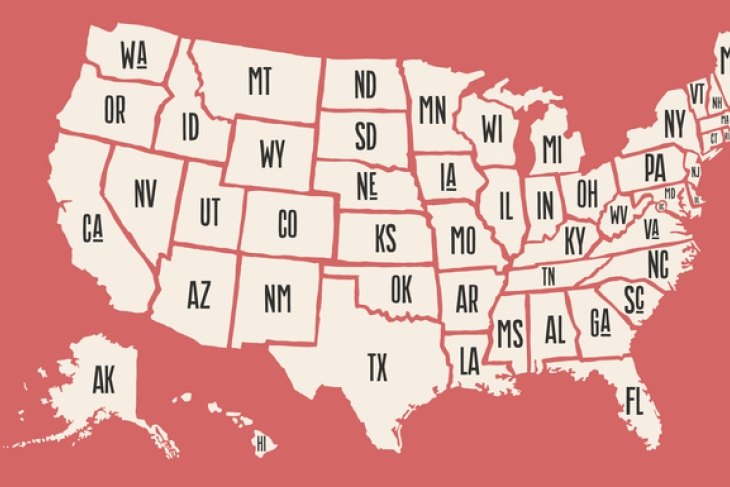Speaking before the Council of Chief State School Officers last month, U.S. Secretary of Education Betsy DeVos surprised many in the audience by criticizing a number of states’ Every Student Succeeds Act (ESSA) plans and pleading with states to aim higher. Broad criticism followed her remarks: DeVos had an opportunity to leverage the enforcement authority of her office to ensure the very innovation she claims is lacking.
However, DeVos’s critics cannot forget that, for the first few plans to receive Education Department responses, her staff read the law, reviewed the plans, and delivered thorough feedback to spur improvements. Chief state school officers voiced their objections, the agency responded and its review process became less stringent.
Given how this developed, DeVos’s criticism was jarring, but perhaps not altogether surprising. Her sentiments about the quality of state plans were shared by governors on a bipartisan basis. Several governors, prior to their states submitting final ESSA plans, pressed state education agencies to bolster plans with bold reforms that would drive improvement.
Governors were not alone. Bipartisan concerns, from independent peer reviews to respected policy organizations, were ever-present throughout the process.
Rather than the panacea many hoped for, state ESSA plans became federal compliance forms. And although there is undoubtedly good policy included in the plans, no one should place their hopes for an equitable, future-ready education system solely in a compliance exercise. Every state needs more creativity and vision than that limited exercise allowed states.
So instead of dismissing calls to improve the quality of state plans or dwelling on state plans as a missed opportunity, it is time to listen once more to educators, families, school board members, district leaders, and communities to develop solutions that will support student success under ESSA, whether every state submitted a perfect plan—or not.
Governors’ pursuit of a better education system for all students does not end with federal approval of their state plans. To ensure the student success touted in ESSA’s title, states must go beyond the “bare minimum” DeVos denounced.
Approved state plans should be the start of a conversation with schools and communities about how we can ultimately achieve better educational results for students. Through shared ownership and a commitment to continuous improvement, the bold ideas, strategies, and solutions governors were seeking in a number of ESSA plans can still be uncovered.
In many circumstances, because they were viewed as a compliance exercise, approved ESSA plans are unable to stand on their own as a guiding light for educational excellence. But by utilizing the following strategies, states can provide cities, counties, districts, schools, and families the tools they need to make sure that the ESSA plan is—as promised—only the floor, and not the ceiling, for what students and schools can achieve.
- Stakeholder engagement must continue. “You are listening, but not hearing,” an educator told a state education agency official during an ESSA listening session, frustrated that months of input had not been meaningfully incorporated into the state plan. The ideas of educators, parents, and the civil rights community should have been the foundation of every ESSA plan submitted for approval. Stakeholder engagement should be reinforced throughout the ongoing administration of the law with a permanent process in place for school and district feedback to inform state action.
- Statewide strategic and comprehensive education plans. State chiefs have indicated that state plans “do not reflect everything a state is doing to move education forward in their state.” If that is the case, where do we find the missing pieces not included in the ESSA plan? It is a different answer in every state, if the information is available at all. In most, comprehensive state education agency plans need significant updates to align with their ESSA plans. States should also articulate an ambitious vision for K–12 education and its connection to early education, postsecondary education, and workforce training by developing a statewide strategic plan for education. A strategic plan presents an opportunity for states to assess the strengths and weaknesses of their education system and communicate a holistic strategy to move it forward.
- Reader's guide for parents and educators. Districts and schools need to understand their state’s ESSA plan to implement it. Illinois became the only state in the nation to produce a reader’s guide to level the playing field for the education community and help them understand the impact of ESSA on their state. By crafting a reader’s guide, states can distill elements of their ESSA plans—and more comprehensive, strategic plans—into a clear format for communities, and leverage it as a critical tool for clear messaging and smooth state implementation.
- Don’t dismiss feedback; utilize it. Once a state has gained federal approval of its ESSA plan, leaders should not dismiss all of the related letters, comments, public remarks, reports, and independent reviews submitted from governors, experts, educators, and parents to state education agencies and the U.S. Department of Education. These can be a resource for states to adapt their policies; provide focused district guidance; develop resources that augment approved plans; and better understand which stakeholders are skeptical of the final plan, which will help states find the middle ground that will make ESSA implementation successful.
- Submit amendments to state ESSA plans. ESSA provides states the ability to submit amendments to their approved plans at the state’s discretion. With thirty-nine gubernatorial elections and at least seventeen new governors expected, many states will need to use the amendment process to align their educational visions with fresh leadership to fully take advantage of the possibilities in the law and address possible shortcomings as lessons are learned from initial ESSA implementation.
Though undertaking such strategies can seem overwhelming, given the recent state plan development process, the clarity and stakeholder buy-in it could generate would propel states’ education systems forward beyond the narrow nature of state plans.
The views expressed herein represent the opinions of the author and not necessarily the Thomas B. Fordham Institute.

